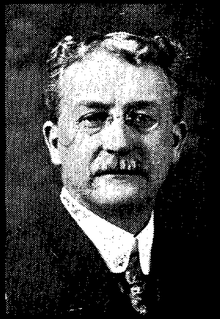John O. Spencer
John Oakley Spencer, Ph.D., LL.D. (July 11, 1857 – May 24, 1947) was an ordained minister and college administrator who served as the 4th President of Morgan State University from 1902 to 1937.[1][2][3][4][5][6] Dr. Spencer's Presidency is considered to be a renaissance period and the first "Era of Progress" for Morgan, in which the campus underwent major transformations.[7][8] The other "Era's of Progress" were under the Presidency of Martin D. Jenkins, Ph.D. (1948–1970) and during the Presidency of Earl S. Richardson (1984–2010).[7][8]
John O. Spencer | |
|---|---|
 | |
| 4th President of Morgan State University | |
| In office 1902–1937 | |
| Preceded by | Francis J. Wagner |
| Succeeded by | Dwight O. W. Holmes |
| Personal details | |
| Born | John Oakley Spencer July 11, 1857 Lynn, Pennsylvania |
| Died | May 24, 1947 (aged 89) Baltimore, Maryland |
| Alma mater | Illinois Wesleyan University Columbia University Oxford University |
| Profession | University President |
Biography
Dr. Spencer was born on July 11, 1857 in Lynn, Susquehanna County, Pennsylvania.[5] He was educated at Keystone Academy in Factoryville, Pennsylvania. Afterwards, he attended Illinois Wesleyan University in Bloomington, Illinois, followed by Columbia University and Oxford University. Dr. Spencer was an ordained minister and member of the Baltimore Conference, Methodist Episcopal Church.[5]
Dr. Spencer became President of Morgan College in 1902, and served in that position until 1937.[7][8] During his tenure as president, the University saw major expansions across the campus. It also saw the first "Era of Progress"[7][8] as the College transformed from a college supported by the religious community (which focused primarily upon training young men and women for the ministry) to a college gaining support from private foundations, and offering liberal arts degrees for a variety of professions. Also during this period, Morgan College received its first accreditation by the Middle States Association of Colleges and Schools.[7][8]
References
- Jones, Ida (2017). "Purpose, Progress and Promise: Morgan State University in Celebration of 150 Years". Morgan Magazine. Baltimore: Morgan State University. Retrieved March 24, 2018.
- "John O. Spencer, Ph.D." (PDF). Archives of Maryland Online. Retrieved 16 March 2017.
- Cattell, J. McKeen (January 31, 1918). "School and Society". The Science Press. Retrieved 16 March 2017.
- Henderson, Paul (February 18, 2012). "Morgan State College". WordPress. Retrieved 16 March 2017.
- "John Oakley Spencer, Ph.D, LL.D." (PDF). Archives of Maryland Online. Retrieved 16 March 2017.
- "The Christian Advocate". December 28, 1916. p. 1720. Missing or empty
|url=(help) - Witmyer, Jannette (Summer 2005). "Morgan's Renaissance-The Presidency of Dr. Earl S. Richardson". Morgan Magazine. pp. 4–12. Retrieved 16 March 2017. Cite magazine requires
|magazine=(help) - Harris, Burney (October 11, 2010). "Remarkable Journey: The Richardson Era". Morgan Magazine. pp. 3–11. Retrieved 16 March 2017. Cite magazine requires
|magazine=(help)